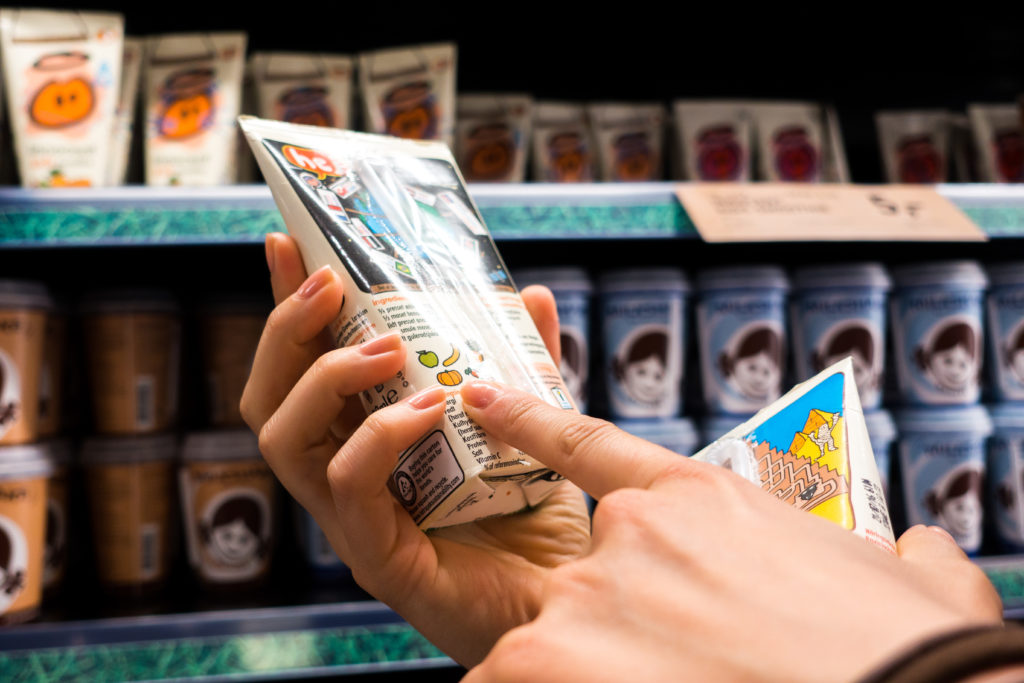The Upcycled Food Association (UFA) recently introduced its certification marker to provide consumers with guidance about the presence of upcycled foods in a wide range of products. The marker may soon be found on food and beverage products, pet food, dietary supplements, cosmetics and more. But will an upcycled certification marker gain consumers’ attention enough to influence their purchasing decisions?
“This is the world’s first mark certifying upcycled food in products and ingredients,” said Leah Graham, marketing director for the UFA. “Our goal is for this mark to be printed on billions of food packages and empower millions of people to prevent food waste with the products they buy. ”
Even before the term was formally defined, upcycled foods had been gaining momentum. Future Market Insights predicted in 2019, prior to the onset of the COVID-19 pandemic, that the upcycled food industry was worth more than $46 billion, with an estimated compound annual growth rate (CAGR) of five percent. A study from food product consultancy firm Mattson revealed that more than half of consumers had an interest in buying upcycled foods.
Defining Upcycled Foods
In October 2019, the Denver, Colorado-based UFA launched as a non-profit and accumulated around 70 members in the first six months. Realizing the need for clarity, the UFA enlisted help from researchers at Drexel University in Philadelphia, Pennsylvania. Together, the UFA and the University released a formal definition of the term: “Upcycled foods use ingredients that otherwise would not have gone to human consumption, are procured and produced using verifiable supply chains, and have a positive impact on the environment.”
The definition ultimately served as a jumping-off point for the UFA to develop its certification marker and membership. But will consumers understand what an upcycled certification represents? According to a study published in the journal Food and Nutrition Sciences, just ten percent of consumers are familiar with upcycled food products, but once educated on the topic, 80 percent said they would seek out upcycled products.
Related: Upcycling Food Waste: Trend or Here to Stay?
This means the UFA will need to prioritize consumer education about upcycling and its implications for reducing food waste and the environment. The UFA is planning to launch a broad consumer education campaign regarding the upcycled certification marker and in doing so, hopes to double the growth rate of the upcycled industry. That could prevent billions of pounds of food waste — and the subsequent emissions it creates — as well as save companies money that would otherwise be wasted on unused food.
Upcycled Certification Marker
In terms of the certification marker, the UFA hired branding agency Modern Species to design the marker for food packaging. From the images on its website, it appears as though there is a regular marker and one that informs consumers that the product contains minimal upcycled content, or less than ten percent.
“You do not need to be a member of UFA to apply for certification,” Graham said. But a membership offers special perks for upcycled food brands. To become a UFA member, upcycled food companies must pay yearly membership fees based on their gross annual sales and are eligible for discounted fees if they are woman-owned or led by a Person of Color. In return, the UFA offers tools, resources, and networks needed to take upcycled food businesses to the next level, Graham said.
The hope of the marker is to educate and ensure consumers that the product helped redirect food that would have otherwise been discarded. With a clear definition, the marker goes beyond vague terms sometimes found on food packaging such as “sustainably-made” or “made with clean ingredients.”
While it may require more time to educate consumers, the UFA and its hundreds of existing members are eager to do so. With Earth Day just behind us and the pandemic serving as a driving force for sustainability initiatives, it seems as though consumers are willing to listen to and support brands that help cut down on food waste.
“We are hoping to see labels on products, and on shelf, by late summer,” Graham said. “There are a handful of variables to consider. We are in the beta phase now. Once those initial products are approved the company will need to add the mark to the packaging. It’s hard to say when the next packaging run might be for each company, so we can’t know for sure, but late summer is a good estimate.”












Join or login to leave a comment
JOIN LOGIN